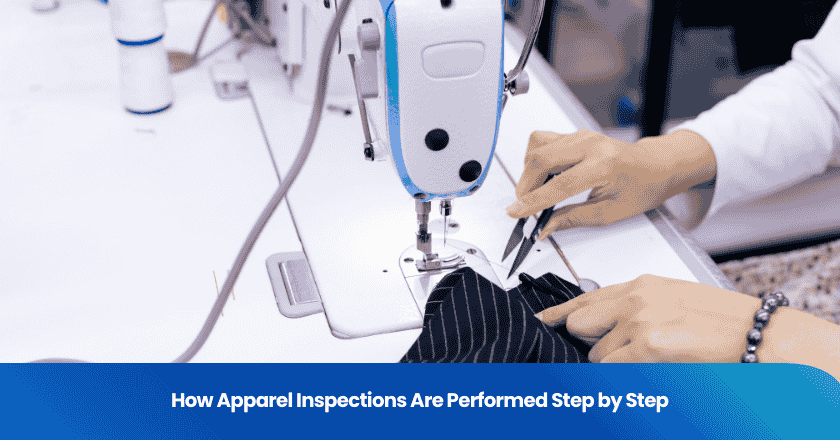
You perform apparel inspections & sorting through a systematic inspection process that strengthens garment quality and compliance. Each stage, from storage checks to final reporting, follows strict procedures.
- The inspection process integrates quality at every step, from fabric selection to final packing.
- This structured approach helps you minimize defects and ensures customer satisfaction.
- Quality assurance focuses on systems and procedures, including process planning and staff training.
- Quality control verifies apparel quality after production and identifies defects, supporting compliance with international standards.
Apparel Inspections & Sorting Process
Storage Condition Confirmation
You begin apparel inspections & sorting by confirming the storage conditions of garments. Proper storage prevents defects and maintains product quality. Environmental factors, such as temperature and humidity, can cause issues like faded colors or weakened fibers. You check for regulatory compliance and ensure warehouse infrastructure supports optimal conditions.
Sample Selection Using AQL
You select samples for apparel inspections & sorting using Acceptable Quality Limit (AQL) standards. This statistical method helps you determine how many pieces to inspect from each lot. You classify defects as critical, major, or minor, and set acceptance and rejection numbers for each sample size.
| Defect Type | Description |
|---|---|
| Critical Defects | Hazardous sharp objects left in clothing. |
| Major Defects | Incorrect sizing, ripped seams, or fading prints. |
| Minor Defects | Uneven stitching or slight color mismatches. |
Pre-Production, In-Process, and Pre-Shipment Checks
You perform apparel inspections & sorting at three main stages.
- Pre-Production Inspection (PPI) focuses on fabric inspection, cutting accuracy, and sewing setup before bulk production.
- In-Process Inspection monitors stitching, seam strength, and measurement accuracy during production.
- Pre-Shipment Inspection ensures finished apparel meets specifications, including size, fit, and packaging.
Tip: You can use 100% inspection for high-value or sensitive apparel, especially when you need to guarantee zero defects.
You repeat checks at each stage to catch issues early and maintain consistent quality. Fabric inspection, accessories testing, and 100% inspection help you identify problems before garments reach customers.
Step by Step Quality Control Checks
Visual Garment Inspection for Defects
You start the step by step quality control process with a thorough visual garment inspection. This stage allows you to identify surface defects and inconsistencies before moving forward. You examine each apparel item under proper lighting, checking for stains, broken seams, and color shading mismatches. You also look for incorrect logo placement and crooked trims. Early defect detection at this stage helps you prevent costly rework and maintain high standards.
You use advanced tools and technologies to enhance your garment inspection. AI visual inspection systems automate defect detection in real time, reducing scrap rates and improving product quality. Computer vision identifies fabric flaws and sewing defects with high precision. High-resolution cameras capture garment images, which AI algorithms process to ensure quality standards are met.
Tip: You can speed up inline production checks by using AI-powered systems. These solutions inspect thousands of garments quickly, helping you maintain high production volumes and consistent quality.
Measurement and Specification Verification
You continue the step by step quality control process by verifying measurements and specifications. Accurate sizing is essential for customer satisfaction and regulatory compliance. You use calibrated measuring tapes, rulers, and flat surfaces to measure apparel. You lay each garment flat and follow international standards such as ASTM or DIN 40080. You train inspectors to measure at the same reference points, ensuring consistency across all checks.
1. Use reliable tools – Calibrated measuring tapes, rulers, and flat measuring surfaces.
2. Follow standard methods – Lay garments flat and measure according to international standards.
3. Train inspectors – Consistent training ensures all staff measure at the same reference points.
4. Double-check critical dimensions – Repeat measurements to confirm accuracy on vital points like chest, length, and sleeve.
5. Apply AQL sampling – Use acceptance sampling plans to decide how many garments to measure for each size.
6. Record and analyze data – Keep detailed measurement charts and compare with the client’s specification sheet.
You double-check critical dimensions during in-process inspection and inline production checks. This step helps you catch sizing errors early and maintain product consistency. You record all data and compare it with specification sheets to ensure every apparel item meets client requirements.
Accessories and Functionality Testing
You finish the step by step quality control process by testing accessories and garment functionality. You check zippers, buttons, clasps, and buckles for smooth operation. You inspect stitching for uniformity and strength. You verify that size, color, and design match approved samples. You confirm that packaging protects the accessory and includes correct labels.
You pay special attention to common accessory failures during testing. Loose buttons, misaligned buttonholes, and broken or chipped buttons can affect garment usability. You also check for unsecured interlining at the placket, which may compromise durability.
Note: During product inspection, you perform both visual and functional checks. Visual checks focus on appearance, color consistency, and surface defects. Functional checks test the accessory’s performance, durability, and safety.
You support your step by step quality control process with structured training programs and mandatory skills certification for inspectors. Regular audits and lab testing validate product quality before apparel reaches the market. Upskilling programs integrate traditional craftsmanship with modern standards, ensuring your team stays current with industry best practices.
Technological advancements such as AI and digital solutions improve the accuracy and efficiency of garment inspection. Real-time data allows you to make timely adjustments and maintain quality standards. These innovations reduce defects early in production, minimize waste, and promote sustainable practices.
Quality Control for Apparel Compliance
Packaging and Label Review
You complete quality control for apparel by reviewing packaging and labeling before shipment. This step ensures garments arrive in perfect condition and meet buyer expectations. You check folding, packing materials, and label accuracy. You also look for signs of moisture or odor in packaging. Incorrect tags or missing labels can cause shipment rejections and confusion for buyers. Poor packing may damage garments during transit.
- Use correct folding and packing methods.
- Select appropriate polybags or boxes.
- Apply accurate size stickers, barcodes, and tags.
- Ensure carton marking and labeling are correct.
Regulatory and Standard Compliance
You must ensure quality control for apparel meets all regulatory and industry standards. You check for compliance with ISO 9001, ISO 14001, REACH, and OEKO-TEX. You also follow packaging and labeling regulations to provide accurate product information. For children’s apparel, you conduct testing for lead content and flammability as required by CPSIA and FFA. You use advanced labeling software and collaborate with your team to track compliance.
Note: Non-compliance can result in financial penalties or product recalls. You protect your business by conducting thorough research and regular testing.
Final Quality Reporting and Follow-Up
You finish quality control for apparel with a final inspection and detailed reporting. Your report includes quantity verification, workmanship checks, product descriptions, on-site testing, and packaging review. You document all findings and share them with your team for transparency.
- Verify order quantity and shipment details.
- Check for damages and classify defects.
- Confirm products match specifications.
- Test samples for functionality and safety.
- Inspect packing methods and labeling.
After reporting, you take follow-up actions. You schedule regular audits, implement corrective and preventive actions, and train suppliers on best practices. These steps help you improve quality control for apparel and build strong supplier relationships.
Tip: Transparency in your supply chain builds trust and supports long-term business success.
You strengthen apparel quality and compliance by following each inspection step with care. Planning, visual checks, measurement, and accessories testing all work together to reduce defects. Using tools like check sheets and Pareto charts during testing helps you spot issues early and improve results. Skipping steps can harm your brand image and reduce buyer trust. When you apply a thorough, step-by-step approach, you boost product quality, meet regulations, and increase customer satisfaction. Consistent testing at every stage leads to reliable, high-quality garments.
Grow your business with TradeAider Service
Click the button below to directly enter the TradeAider Service System. The simple steps from booking and payment to receiving reports are easy to operate.



